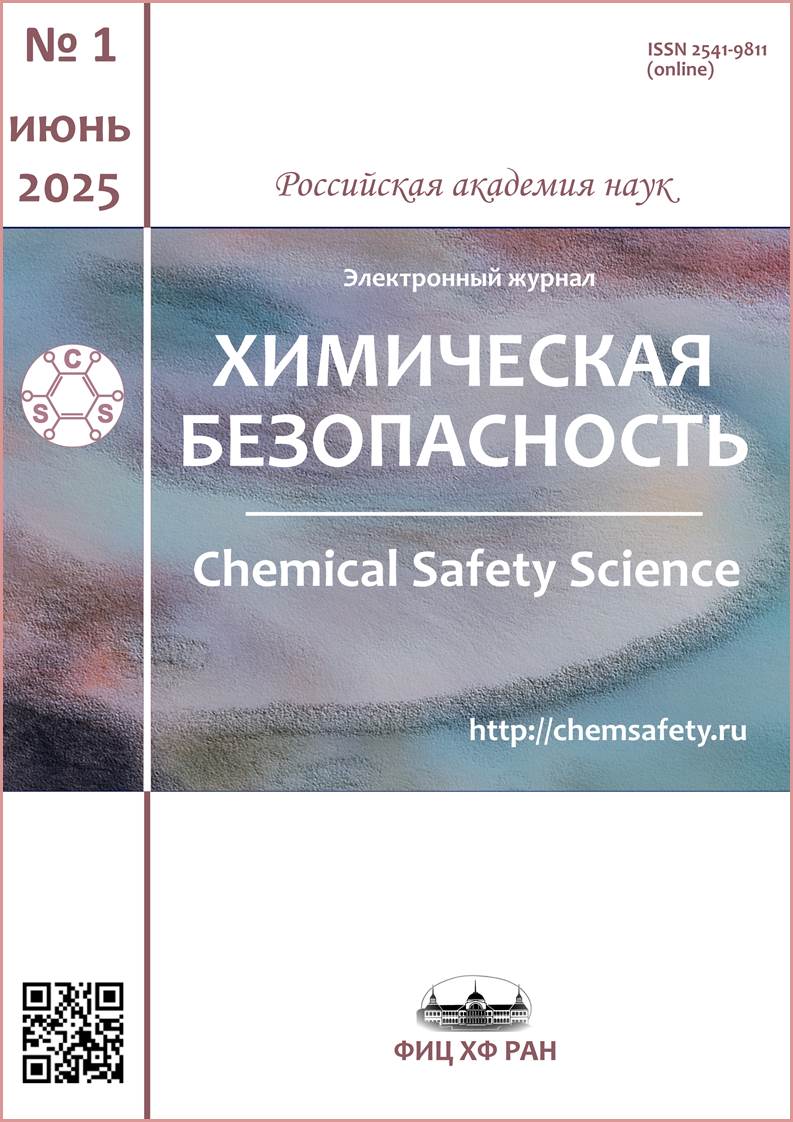Trends in innovative solutions to reduce risks hydrogen transportation using – а review
Abstract
Today, hydrogen obtained from renewable resources is not only a promising energy source that reduces dependence on fossil fuels, but also an important factor in the fight against global warming, reducing harmful emissions into the atmosphere. The success of large-scale use of hydrogen depends on its delivery to consumers, the priority type of which is pipeline transport. The proposed article is an analytical review of innovative solutions aimed at ensuring the safety of hydrogen transportation by pipeline. The mechanism of hydrogen embrittlement of metals is given, which is a key factor, deteriorating their mechanical properties, leading to hydrogen leakage in steel pipelines. The created technical solutions capable of ensuring safe transportation of hydrogen are considered, including new functional materials for the production of steel and polymer pipelines. The possibility of transporting hydrogen together with natural gas using both steel and polymer pipelines is shown. Attention is paid to the issue of monitoring leakage and accumulation of hydrogen during operation of the main pipeline.
References
Li J., Song F., & Zhang X. (2024). A review on hazards and risks to pipeline operation under transporting hydrogen energy and hydrogen-mixed natural gas. Science and Technology for Energy Transition.79(6), 1‒13. https://doi.org/10.2516/stet/2024004.
Genovese, M., Schlüter, A., Scionti, E., Piraino, F., Corigliano, O., & Fragiacomo, P. (2023). Power-to-hydrogen and hydrogen-to-X energy systems for the industry of the future in Europe. International Journal of Hydrogen Energy, 48(44), 16545‒16568. https://doi.org/10.1016/j.ijhydene.2023.01.194
Ozcanli M., Bas O., Akar M., Yildizhan S., & Serin H. (2018) Recent studies on hydrogen usage in Wankel SI engine. Int. J. Hydrogen Energy, 43, 18037‒18045. https://doi.org/10.1016/j.ijhydene.2018.01.202.
Filippov S.P., & Yaroslavtsev A.B. (2021). Hydrogen energy: development prospects and materials. Advances in Chemistry. 90(6), 627‒643 (in Russ.). https://doi.org/10.1070/RCR5014.
KindraV, Maksimov I, OparinM., ZlyvkoO., & Rogalev A. (2023). Hydrogen Technologies: A Critical Review and Feasibility Study.Energies, 16(14), 5482; https://doi.org/10.3390/en16145482.
Hydrogen Pipeline Market. https://www.marketsandmarkets.com/Market-Reports/hydrogen-pipeline-market-154873652.html
Akbar Dauletbay. (2024). Transportation of Hydrogen: Hydrogen Usage. In book: Hydrogen Technologies – Advances, Insights, and Applications. 109. https://doi.org/10.5772/intechopen.1005066
Hagen . A. B., A. & Alvaro A. (2020). Report. Hydrogen Influence on Mechanical Properties
InPipelineSteel.114.https://www.sintef.no/en/publications/publication/1958342/.
Abebe B. A., & Altuncu E. (2024), A Review on hydrogen embrittlement behavior of steel structures and measurement methods. International advanced researches and engineering journal.8(2), 91‒110.https://doi.org/10.35860/iarej.1414085.
Campari A., UstolinF., Alvaro A., & Paltrinieri N. (2023). A review on hydrogen embrittlement and risk-based inspection of hydrogen.International Journal of Hydrogen Energy 48(90),.35316‒35346. https://doi.org/10.1016/j.ijhydene.2023.05.293.
Shang J., Chen W., Zheng J., Hua Z., Zhang L., Zhou C., & Gu C. (2020). Enhanced hydrogen embrittlement of low-carbon steel to natural gas/hydrogen mixtures. ScriptaMaterialia, 189, 67‒71. https://doi.org/10.1016/j.scriptamat.2020.08.011.
Barrera O., Bombac D., Chen Y., Daff T. D., Galindo-Nava E., Gong P., Haley D., Horton R., Katzarov I., Kermode J. R., Liverani C., Stopher M., & Sweeney F. (2018). Understanding and mitigating hydrogen embrittlement of steels: a review of experimental, modelling and design progress from atomistic to continuum. Journal of Materials Science.53(9). 6251–6290. https://doi.org/10.1007/s10853-017-1978-5.
Pat. 117144269, CN, 2023.
WO2024171518, 2024.
Pat. 113103613, CN, 2022.
Pat. 113464732, CN, 2023.
Pat. 20230341075, US, 2023.
Pat. 114962804, CN, 2022.
WO2024133959, 2024.
Pat.20240263721,US, 2024.
Pat. 20240304611, US, 2024.
Pat.2626801, GB, 2024.
Pat. 2016135833, JP, 2016.
Pat.20240399720, US, 2024.
Pat. 115654227, CN, 2023.
WO2023185141, 2023.
Pat. 0002761477, RU, 2021.
Pat. 116837286, CN, 2023.
Pat. 114484098, CN, 2022.
Pat. 219955069, CN, 2023.
Pat.116263236, CN, 2023.
Pat. 4394345, EP, 2024.
Pat. 114720069, CN, 2022.
Pat. 116336388, CN, 2023.
Pat, 20240384840, US, 2024.
Copyright (c) 2025 Rugiya A. Ismailova, Elshan N. Aliyev, and Samira A. Garaybeyli

This work is licensed under a Creative Commons Attribution-NonCommercial 4.0 International License.












